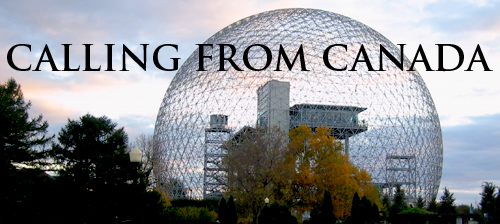It’s late summer in Montreal, and many of the major museums and even smaller art galleries are doing what they often do during the summer months: exhibit works from their permanent collections. Musée d’art contemporain de Montréal (MACM) is no different. However, their “black box” room (denigrated to the institution’s basement no less), has something different and excitingly relevant going on, thanks to their Head of Multimedia Events, Louise Simard. For about four weeks and for the first time in a Canadian venue, the box is exhibiting RealTime UnReal, the latest project by the new media collective Workspace Unlimited, whose members include Kora Van Den Bulcke and Thomas Soetens. Built site-specifically for the MACM, this slick and elegantly-presented installation presents visitors with a large rectangular screen on which the projected image of another screen is displayed. Once the network of motion and location sensors detect the user’s presence, the onscreen image “comes alive” as the user’s speed and movement transform what appears on the screen: a metamorphosis of the room and parts of the larger museum outside the black box, triggered by the user. The transformation evokes a constant negotiation between our perceptions and expectations of how space is represented. While the technology in this architecture-meets-video art installation is certainly impressive, it is also integral to the conceptual ideas about lived and imagined spaces the installation presents.
RealTime UnReal turns the MACM’s black box into a seductive site to behold. The use of state-of-the art Barco projectors and a Stewart Silver 5D Filmscreen, along with very sophisticated lighting as well as a floating (i.e. hanging from ceiling as opposed to grounded) square structure marking the perimeter of the user’s space, all contribute to a making the virtual experience believable–a lot like what we have in mind when we think about Blade Runner. In fact, this new media art installation is the most convincing virtual space I have ever experienced. Rather than employing electronic appendages or having to intentionally manipulate anything or follow instructions and directions for specific movement, users have only to don a pair of 3D glasses and walk, one at a time, inside the marked space. (Thankfully, the detectors are highly sensitive and discreetly situated so that the user need not awkwardly flail or jump about to calibrate them, as is the case with many other motion-sensitive art works). At one point, among the fractal, discombobulated and then re-forming aspects of this architectural space, an image of the user is represented in real-time on the screen. This inevitably leads the user to realize that it is he or she who is guiding the camera’s point of view. The user turns right, and appears to be controlling the perspective seen on the huge screen. For many users, this moment of identification is the most fascinating. In my case, I felt like I was a Tron-type character within some kind of 3D architectural software like Google SketchUp.
Van Den Bulcke and Soetens assert that concept is as important to them as content and form. Coming from new media artists who formerly trained as an architect and a visual artist, respectively, this is a relief. What contributes to so much of the bad new media art that’s out there is a blatant emphasis on technological hijinks that ultimately aims only to entertain. But new media art should be like theory: a tool for thinking, questioning, provoking and illuminating. RealTime UnReal’s non-linearity suggests that our digital culture provides us with what Van Den Bulcke and Soetens refer to as “hybrid space.” In this case, it is composed of real and virtual space – layers that consist of the black box on the basement level, and the atrium, reception area, and entrance on the main floor. In its rendering, the screen even offers an impossible view of the building from a perspective that would only exist if the user could see through walls. In addition to hybrid space, the work also produces a kind of hybrid time. The layering of real-time user position and acceleration activity data with previously 3-D mapped spatial information about the venue results in multiple temporalities operating in conjunction with one another. The work suggests that digital culture is changing our relationship to perception, space, time, and material, and that we are already living and experiencing hybrid space and time.




